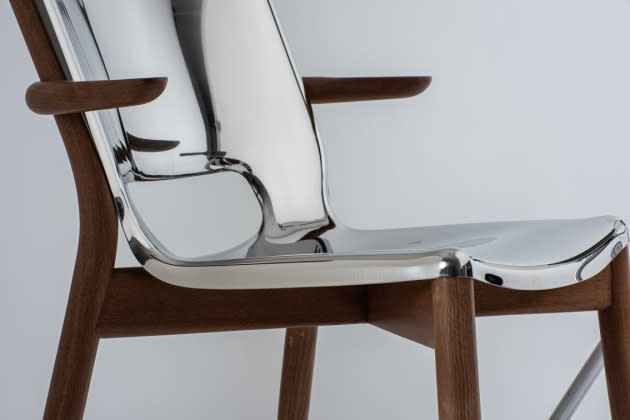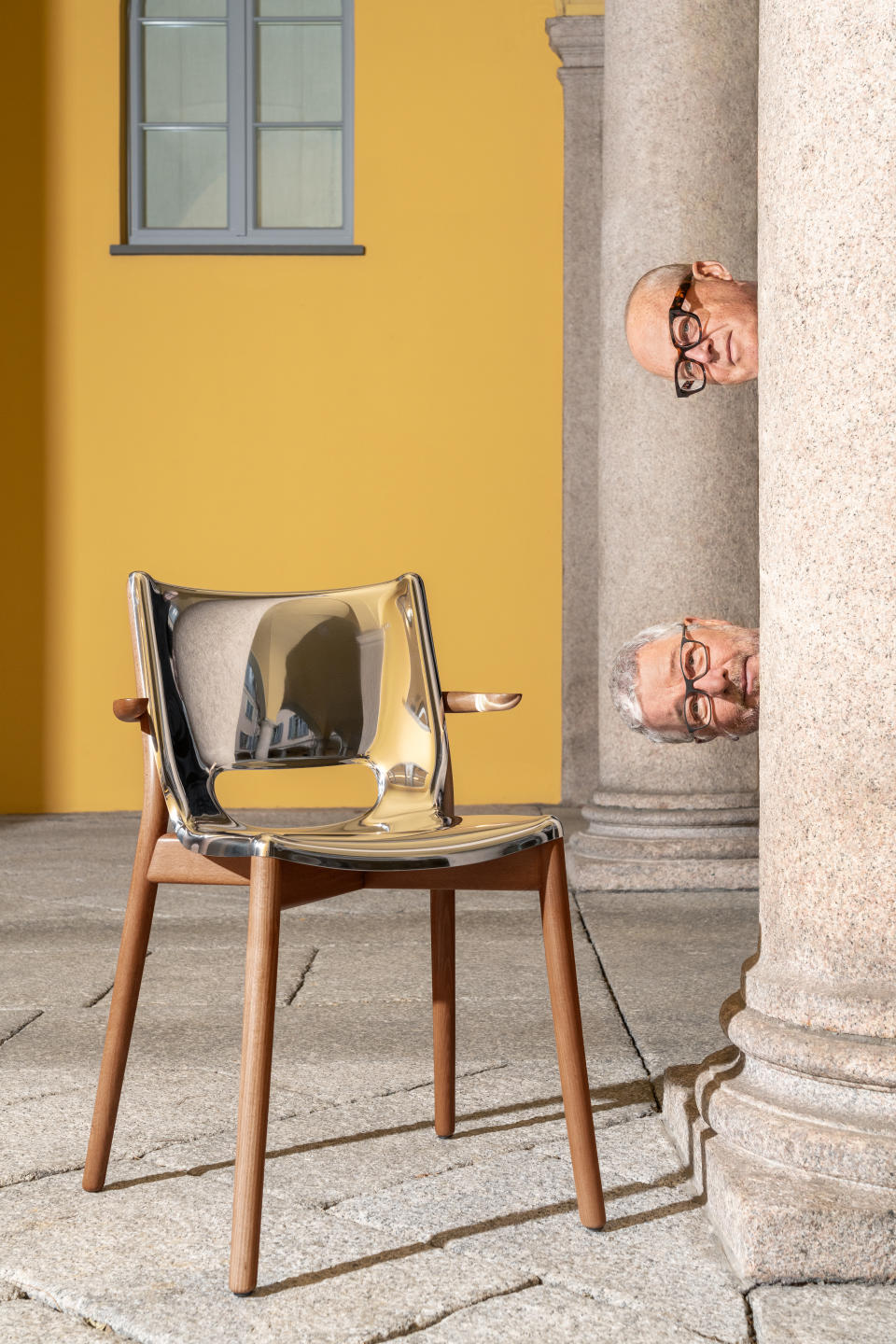Philippe Starck on Why Design Is Useless, Overcoming Materiality and Designing Love
- Oops!Something went wrong.Please try again later.

“When I say I’m not proud of what I do it’s because design doesn’t help evolution. It is absolutely useless.”
So declares design maverick Philippe Starck midway through an interview at the light-filled Alessi offices in central Milan a few weeks prior to unveiling his “pan chair” for the brand.
More from WWD
It may sound counterintuitive coming from one of the voices who helped shape the design world for the past half century and sketched around 10,000 material objects of practical utility throughout his prolific career — think furniture, electric bikes, individual wind turbines and floating lamps as well as hotel and restaurant buildings, mega yachts and house modules to be installed by Axiom Space on their commercial space station.
It turns out Starck is not much into materiality, predicts dematerialization as the next big thing and finds inspiration either within himself or in science, systematically avoiding mundane events and any social activity without a purpose.
Four years in the making, the Starck-designed Alessi chair, called Poêle, is a thought-provoking design object intended to remind the user or viewer of a frying pan — kitchen and homeware being the Italian company’s expertise.
The cold-pressed stainless-steel furniture piece features a luminous and mirrored seat and four beechwood legs in a dark brown tint. It is part of Alessi’s Ars Metallica, which is Latin for Metal Arts, a roster of product and project launches for the 2023 edition of Salone del Mobile and Design Week. The project also includes cutlery designed by the late Virgil Abloh, an unedited art multiple by Salvador Dalì and metal containers by eight contemporary designers as part of the Tornitore Matto project.
“We only play and that’s always the rule of the game, to surprise one another. And we have fun, we had fun and we have fun,” Starck says about collaborating with Alberto Alessi, the company’s president.
He characterizes Poêle as a “stupid idea” in the best sense of the word and very much in sync with past collaborative efforts between the pair.
Take, for example, Starck’s famed Juicy Salif citrus squeezer for Alessi, the first object he designed for the company in 1988. He was pitched a butter box and came up with the biomorphic utensil that sparked conversations.
Some saw a rocket or a space shuttle in it, but Starck eagerly clarifies that it was in fact a play on the topology of the object — as in the study of spaces — which triggered him to reinvent and turn it inside-out.

Known for his prowess in turning plastic materials upside down and inside out, Starck — who has also worked with glass, stones and most recently plywood — was faced with obstacles in dealing with stainless steel for the Poêle chair and pushed engineers and artisans to mold it “millimeter by millimeter by millimeter,” as he insists in his French accent.
“My job is to push, to inject fantasy, creativity, poetry in materiality.…The reason to exist of humanity is because we are creators. It’s in our DNA, we are the only animal species which has taken control of the quality and speed of mutation,” he says.
An indefatigable and somewhat solitary creative, Starck usually works on 250 projects a year, many at the same time, with little to no space or ambition for distraction.
When creating “you are somewhere else, in a better world, because it’s your mind, you’re out of reality. And I don’t like very much real things, real life, because I like some sort of deep elegance and when you go to reality it’s difficult to keep the real elegance,” he offers.
Conversely “when you’re alone and you are in front of yourself, you can reach a very high level of concentration. Never forget that creativity is mainly concentration and I have such a high level of concentration — which my wife calls meditation — that I can make what I want because the brain is so powerful, so flexible,” he explains.
“The problem of people is that they think they’re not creative. They are but they don’t have the time, they don’t give [themselves] the right time, right space and the right life to be creative,” he contends.
Social life is distraction and it doesn’t add to creativity, but he’s doesn’t mind eschewing it altogether.
Does he still have fun with such a packed schedule and little spare time?
“You know, this question on whether I have fun working every day is like asking a fish if it likes water, to a bird if it likes air. I don’t discuss about that, it’s my life. I have two activities in my life which are almost the same: love, [as in] loving my wife, and create,” he says.
“I was born with an addiction, very, very heavy addiction for creativity; it’s a mental sickness,” he admits. “I have no great pleasure, it’s just my blood.
“I’m sure my destiny was to make a creative job, but why I’m a designer, first I don’t know; two I’m not very proud [of it either],” he says.
The latter statement comes from his detached and cynical opinion on design, which he describes as a gimmick used to make it “acceptable to live within certain material obligations [restraints].”
He seems charmed by the new frontiers of technology-powered material-less worlds, so much so that he’s confident in predicting that the job of designer will disappear in 15 years.
That doesn’t bother him at all.
“I have absolutely no desire to design a product. To design a mystery, to describe or redo a mystery, to understand a mystery and be able to redo it, yes, definitely.…My only dream is to produce less, understand more, be even more visionary, more creative, more honest, more poetic, and more able to love,” he says.
Best of WWD

